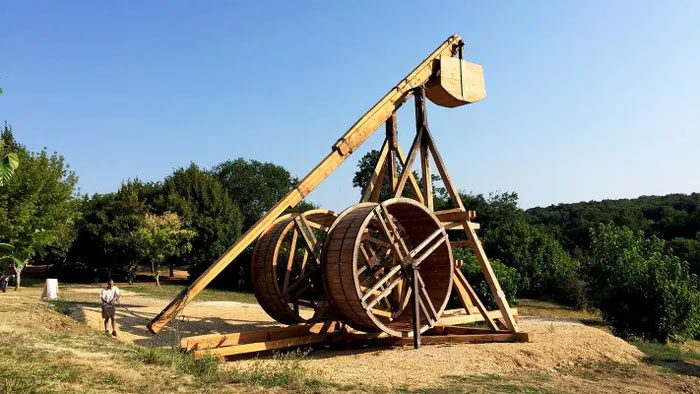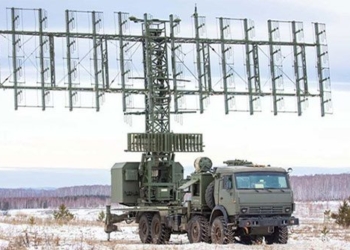Since the 12th century, the Trebuchet has become a popular siege weapon on many battlefields. This machine possesses tremendous power, capable of launching stones weighing hundreds of kilograms at targets approximately 200 – 300 meters away.

According to some researchers, the Trebuchet originated in Asia.
The Trebuchet is believed to have appeared as early as the 6th century. However, from the 12th century onward, this siege weapon became widely used on battlefields in both Asia and Europe. Some researchers suggest that the Trebuchet has its roots in Asia, after which it was adopted by various countries for centuries.
The Trebuchet operates on the mechanical principle of leverage. Its construction includes a suspended arm, a lever arm, and a heavy counterweight. When the suspended cord and lever arm are raised to a vertical position, the end of the cord releases, propelling a stone toward the target with incredible force.

The Trebuchet can hurl stones weighing from several dozen to hundreds of kilograms.
Researchers have found that the Trebuchet can launch stones weighing from several dozen to hundreds of kilograms at targets approximately 200 – 300 meters away. The stones fired from the Trebuchet can devastate everything in their path.
History records some giant Trebuchets that used stones weighing over 1,000 kilograms to attack fortifications. Among these, a notable case is the Trebuchet that launched stones weighing up to 1,500 kilograms during the battle in 1412 under King Charles II of France, or during the siege of Lisbon in 1147.
With such heavy stones, the armies using the Trebuchet could breach the enemy’s walls, facilitating the conquest of fortresses.




















































